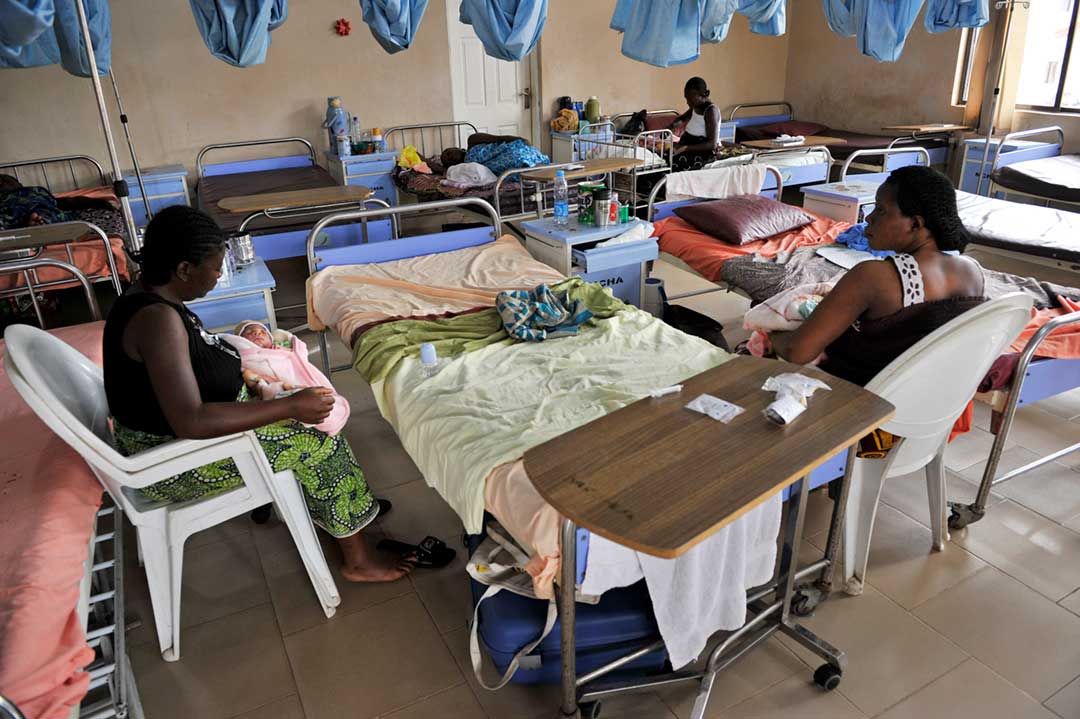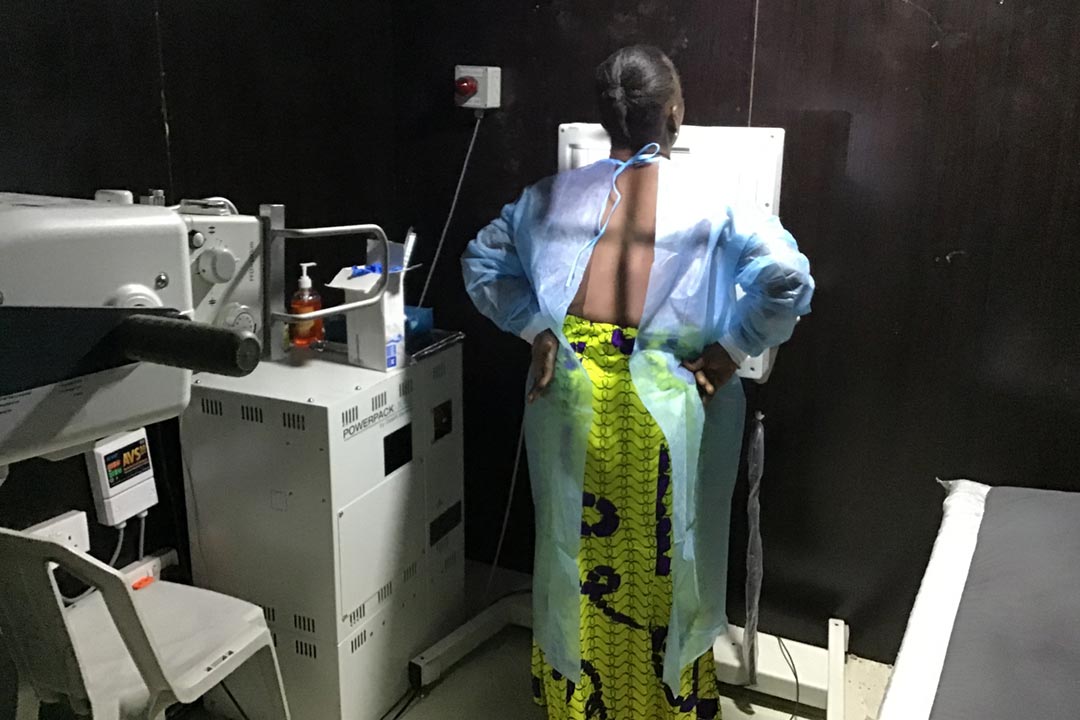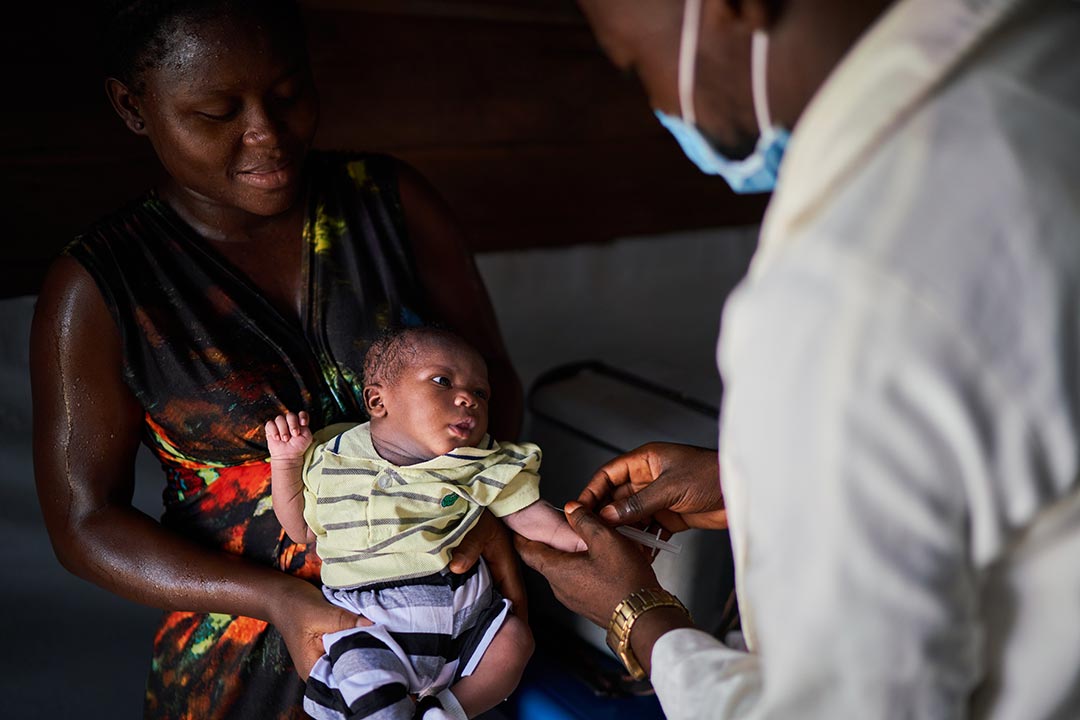Nigerian nutritionists use locally produced soy flour to aid malnourished children
At an Oyo State hospital, an affordable, state-subsidised therapeutic food is helping underweight children recuperate, boosting their battered immune defences in the process.
- 12 December 2023
- 7 min read
- by Chioma Obinna

At two years old, Deborah Godfrey weighs just 5.2kg – far too small for her age. She whimpers and cries almost constantly. Deborah is one of the children in treatment for severe acute malnutrition (SAM) at the Nutrition Department of the Oni Memorial Children's Hospital (OMCH) in Nigeria's Oyo State.
Her mother, Folashade Godfrey, is silent, but the expression on her face hovers somewhere between powerlessness, frustration and despair. According to Godfrey, the child has been ill since she was nine months old, with frequent bouts of vomiting and diarrhoea, leading to weight loss.
"Many children with malnutrition usually come down with vaccine-preventable diseases like measles, tuberculosis, diphtheria, and Hib pneumonia. We find less of these infections in well-nourished children. When they happen the severity is usually more in children who are malnourished, because they don’t have the immunity to fight back, whereas those well-nourished, it might just be mild."
– Dr Salami Ayodeji, Medical Officer at OMCH
"She was worse than this the first time I brought her to the clinic, and the doctor informed us that she had nutrition issues. I am thankful for this hospital," says Godfrey.
"She was initially admitted to the general ward for treatment where we spent a few days," Godfrey recalls. "She was treated for diarrhoea and fever before we were finally discharged and sent to the Nutrition Department for further management."
The nutrition officers at the clinic took Deborah's measurements and drew up a treatment plan that relied on a food supplement – a high-grade soy flour supplied in sachets, and prepared at home by the child's mother. Godfrey says she mixes a sachet of soy with locally made pap (corn meal), palm oil, and sugar.
"At first, I didn't think soy flour could work its magic. I've noticed a significant improvement. She can sleep without the usual crying; physically, she has gained a little weight," she says.
Dr Soy Bean
Why soy beans? VaccinesWork reached out to Dr Beatrice Oganah, Associate Professor of Nutrition at the Lagos State University of Education, to learn more about the life-saving legume.
"One remarkable benefit of soy bean is its protein content, which is comparable to that in animal protein," she said. It's the kind of high-quality protein that the body needs for the growth and upkeep of the immune system. "Consuming enough protein encourages the body to produce antibodies and immunological cells which aid in the defence against illnesses."
The plant is also a great source of fat and carbohydrates, she explained, and rich in valuable micronutrients: "One hundred grams of soy bean flour contains 277mg approximately of calcium, 9.5mg of iron content, 280mg of magnesium, approximately 704mg of phosphorus, 1,797mg of potassium, approximately 2mg of sodium, and 4.3mg of zinc," she said.
"Studies have also demonstrated the immune-boosting effects of isoflavones in soy beans, as it boosts the immune system by shielding the body's cells from the harm brought on by free radicals," Dr Oganah added.
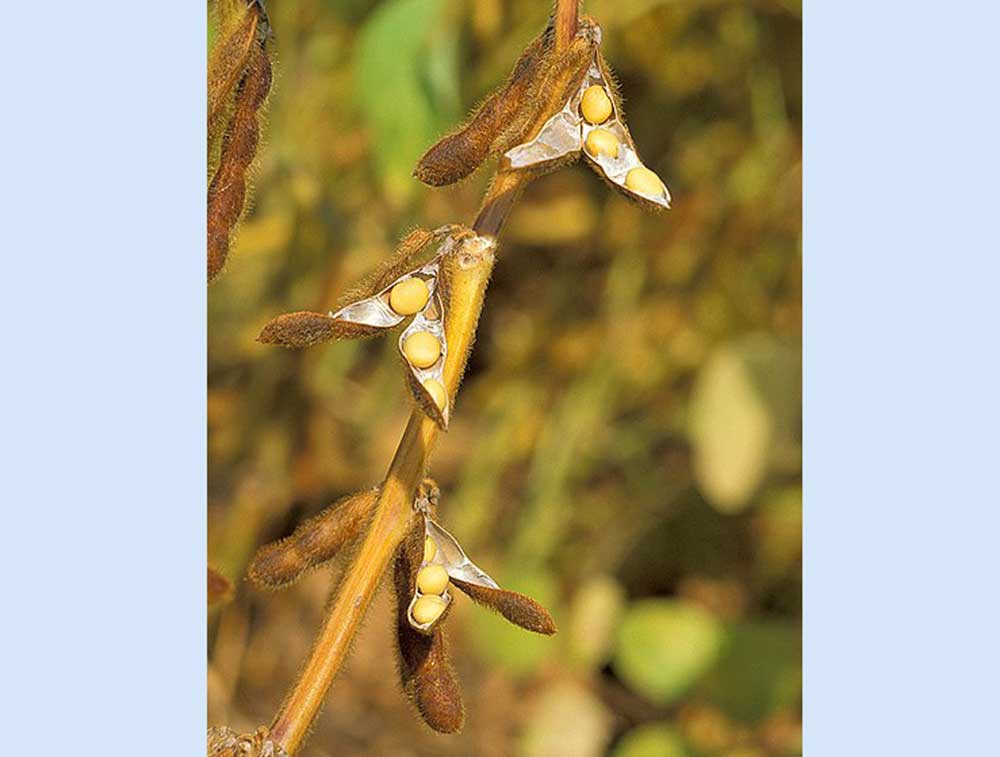
Starving immune systems
Sadly, Deborah is one among many in treatment for malnutrition at Oni Memorial Children's Hospital.
Established decades ago, with support from UNICEF, under the Oyo State Primary Health Care Board, the clinic is primarily a rehabilitation centre where malnourished babies are looked after on an outpatient basis.
Typically, children are referred to the nutrition clinic from other hospital departments, where they are seen for health problems linked to or exacerbated by their poor nutritional statuses.
Dr Salami Ayodeji, OMCH Medical Officer, says, "Many children with malnutrition usually come down with vaccine-preventable diseases like measles, tuberculosis, diphtheria, and Hib pneumonia. Pneumonia–- different types of pneumonia, even those caused by pneumococcal disease. And rotavirus infection as well, that causes diarrhoea, and also meningitis."
He says because malnutrition increases the risk of infectious diseases, the pattern of these infections differs in those who are malnourished compared to those who are not.
"We find less of these infections in well-nourished children. When they happen the severity is usually more in children who are malnourished, because they don't have the immunity to fight back, whereas those well-nourished, it might just be mild."
Confronting malnutrition
"We have treated the worst cases. In some situations, you find a newborn, less than one month old, with malnutrition referred to us," explains Florence Babalola, a nutritionist at the clinic.
In 2017, a major household survey called the Multiple Indicator Cluster Survey (MICS) revealed that 17.4% of children aged under five in Oyo State were severely or moderately underweight for their age, 24.4% of children in the same cohort were stunted, and 7.6% of children in that age group were moderately to severely wasted.
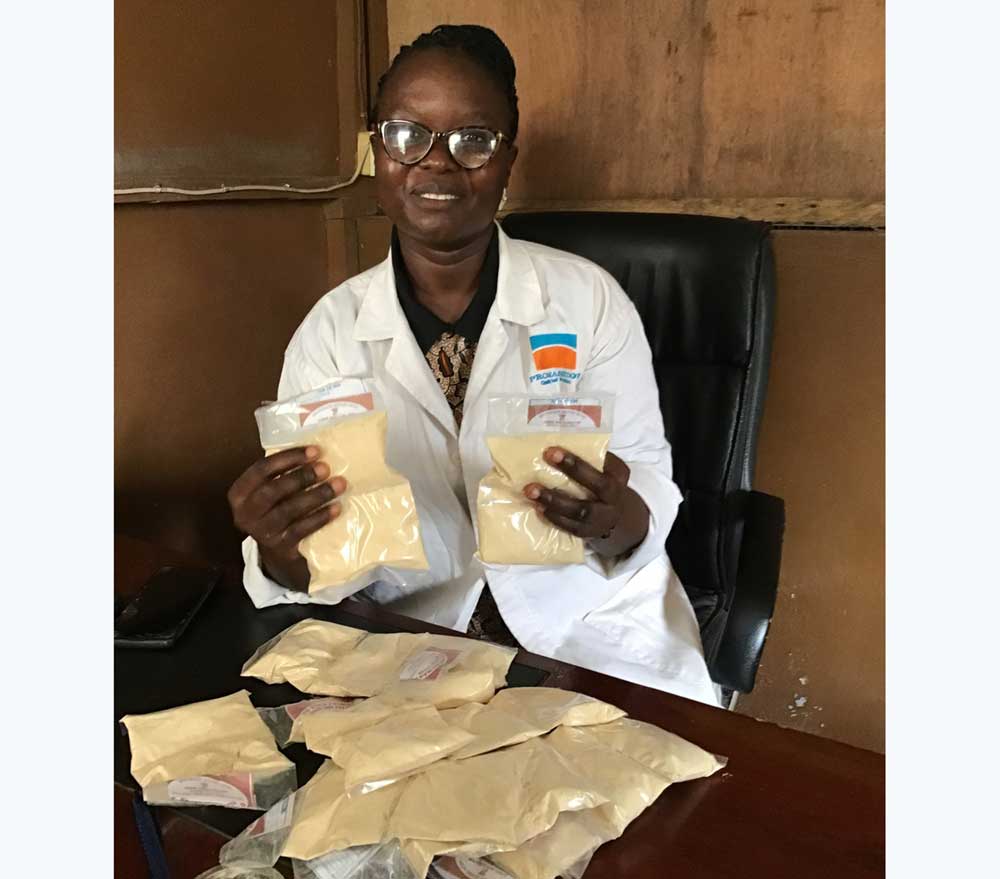
Credit: Chioma Obinna
Babalola thinks a major reason for the alarmingly high rates of malnutrition in Oyo is that most women do not exclusively breastfeed their babies.
In response to the MICS data, the state government acknowledged malnutrition as a problem, and mapped out a response strategy, the nutritionist explains. She says the production ofsoy flour was an important component of the new plan.
Today, Babalola says the nutrition clinic sees about 50 children each month. All of them receive prescriptions for soy flour and other foods for a period of weeks, with measurements taken regularly to monitor progress.
Magic beans
The soy flour sachets offer the clinic staff an alternative to ready-to-use therapeutic food (RUTF), a commercial product made from powdered milk, peanuts, butter, vegetable oils, sugars, and vitamins and minerals, which has long been supplied by UNICEF. Babies under the age of one month, who cannot take soy flour, remain reliant on RUTF, but Babalola says the cheaper, locally-produced soy flour has achieved significant successes in rehabilitating older malnourished kids.
Have you read?
"For those who can take soy, we ensure that we give mothers specific instructions, which are also on the label. This is because if not well prepared and used, it may cause more problems for a child, like stooling," Babalola explains. "In some serious cases, we ensure that the mother brings the child on a daily basis for monitoring. We take the child's measurements daily too. In some cases, we prepare the soy each time the mother comes with the baby, because hygiene is very important in dealing with this product. We also offer Vitamin A supplementation and deworm the children," says Babalola.
The clinic is state-funded, and Babalola says she doesn't know how much is spent on soy flour. But she also says that it's clear that "the product is saving some money for the state government and UNICEF."
Temitope Odugbemi, mother of a malnourished child treated at the clinic told VaccinesWork: "At first I could not believe it, but a few months after I used the product, my child is responding. I prepare it as a beverage, and I follow the instructions on the label. It's excellent, it is perfect."
Temitope recalls her child was showing signs of malnutrition. "She has problems with loss of appetite. She hardly eats food and was not developing well, until my friend introduced me to the clinic where soy flour was recommended for the child."
She says the nutrition officers at the clinic followed up with her for a couple of weeks to make sure she understood how to prepare the soy flour in combination with other local foods.
Recipe for recovery
Meantime, in a kitchen on-site, the product is being cooked up. Aboseade Ali, another nutritionist at the centre, says the production is handled by clinic staff with support from university students on internship.
"From de-stoning – we remove foreign materials from the soy – [it] is salted and allowed to stay for some minutes, after which it is fried. After it cools down, it is milled, and packaged in smaller sachets. We have a separate kitchen where it is processed and stored under normal temperature." She states that a sachet of soy flour is enough for a child under five years, per day.
"We use 50 nairas (US$ 0.63) of local pap (corn meal), and you need water to prepare the pap, add a sachet of soy flour to the water and boil the mixture for 15 minutes. Add salt, sugar and palm oil. Salt helps to prevent goitre, sugar for energy and palm oil helps the eyes. After mixing the ingredients, you boil for another three to four minutes, add the pap and mix. Then, place it on the fire to boil for another three to four minutes. The mixture must be taken within 12 hours," she explains.
Ali says the product, which is subsidised by the Oyo State government, is only available in Primary Health Centres for 50 nairas per sachet because it is not for profit-making. "This is why it is not sold in the open market – to avoid retailers taking undue advantage of mothers," she says.
More from Chioma Obinna
Recommended for you

